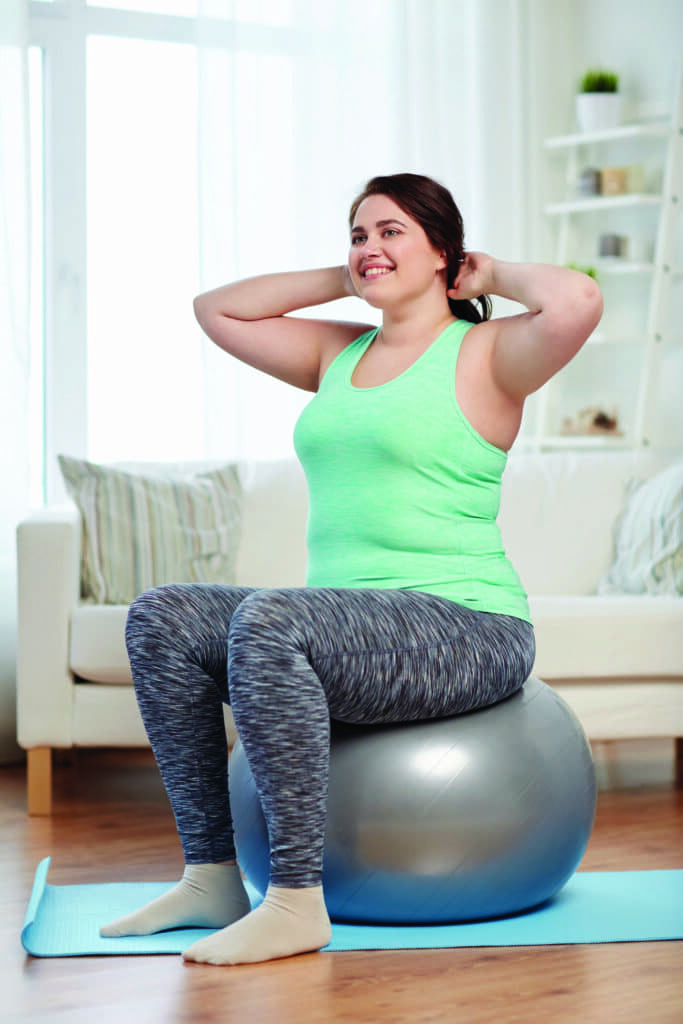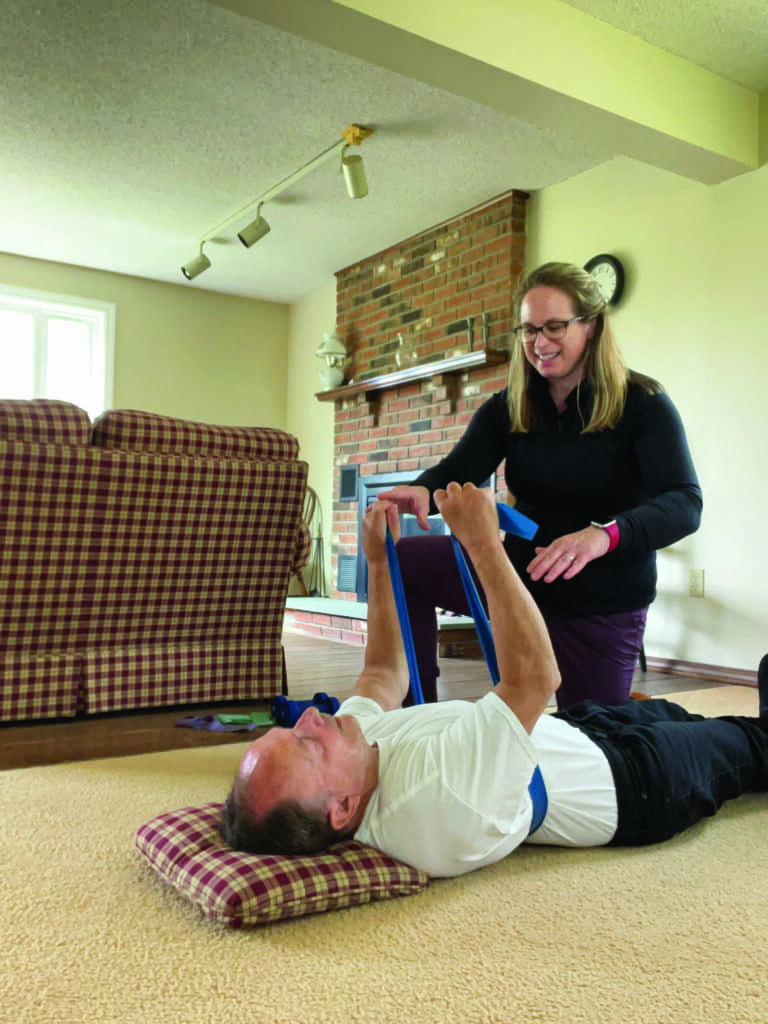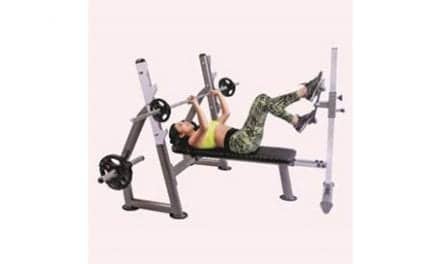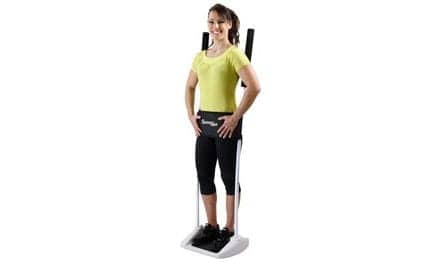Do your clients have all the proper equipment to complete their home exercise programs?
By Shayla Adams, PT, DPT, CEEAA
How often do you create a home exercise program (HEP) for your clients? I am going to imagine you quickly thought, Well, everyone gets an HEP. So, now let me ask you, how often do you provide equipment recommendations in order for your clients to be successful with said HEP? Bet this answer took a little more thought, because many of us are so accustomed to simply cutting a piece of elastic band and sending our clients on their way.
There’s no doubt that multiple factors affect whether a client will be compliant or non-compliant with their HEP, including not having the proper at-home equipment. I believe we can and should have a greater impact on our clients’ success and adherence to the programs we create specifically for them while they are on physical therapy services and beyond.
The creation of HEPs and the recommendation of home exercise equipment has been new for me personally, and it has come with a little bit of leg work. For 9 years I worked for a skilled nursing company where custom HEPs were not created and people were focused on getting home, not caring whether they would be able to exercise once there. Then in the middle of the pandemic, I founded INSPIRE Physical Therapy and Wellness LLC, a mobile outpatient physical and occupational therapy clinic servicing older adults and people with Parkinson’s in southern Rhode Island and southeastern Connecticut.
Now I am right there with you, creating a custom HEP for every client. But I also make it a point to provide guidance and recommendations for in-home exercise equipment to enable clients to be successful both while receiving physical therapy and once they are discharged.
We recommend equipment that is easy to use, budget-friendly, space-saving, versatile, and high-quality. Few of our clients have the room to accommodate large machines or devices, nor do they have the budget. But that’s OK. An effective home gym space can be created with smaller, pared-down versions of equipment. With that in mind, here’s a look at the products I most often recommend my clients use to continue their home exercise program.
Kettlebells
All you have to do is type “benefits of kettlebells” into Google and you will see why everyone should have them. Melissa Perry, OTR/L, of INSPIRE Physical Therapy and Wellness, loves using kettlebells with clients because, “By design, the kettlebell’s center of gravity is six to eight inches outside of your grip, creating a constantly changing center of gravity which replicates the force you will encounter during activities of daily living.”
She highly recommends the BowFlex Select Tech 840 KettleBell by BowFlex, Vancouver, Wash, due to its space-efficient design and because with a quick turn of the dial you can change the amount of resistance from 8 pounds all the way up to 40 pounds. “Kettlebells build powerful forearms and a strong grip,” says Perry. “The handle is thicker and their design results in their center of gravity being in motion, so your grip training becomes both static and dynamic muscular contractions as you attempt to control the fluctuating center of mass.”
Nordic Walking Poles
For Nordic walking, I recommend to my clients the Activator Pole by Urban Poling in Toronto, Ontario, Canada. It is based on the traditional Nordic walking pole, but this newer version has a pin-locking system to accommodate more weight and an ergonomic handle allowing for increased core activation and offloading through the hips and knees. Nordic walking has been popular in Europe for centuries, but only recently has it started to catch on in the United States and Canada. It’s like using modified ski poles to push off while walking on hard ground instead of snow. Using the Activator Pole, clients can challenge their balance, improve posture, improve quality of gait, and return to activities they love, like walking on the beach and hiking. Oh, and the poles are great for those with Parkinson’s disease.
Foam Rollers
For clients who are new to foam rolling, we often suggest the SoftPro Foam Roller by Minneapolis-based OPTP because it is made with a softer foam to allow clients to ease into the world of foam rolling. The company makes many of the professional-grade rollers found in physical therapy offices, gyms, and yoga studios. The SoftPro Foam Roller is made with durable-quality EVA that will last, and the lightly textured surface provides extra grip if used on wood or tile floors. We like that it comes in a variety of lengths and styles (there’s also a half dome option) to accommodate specific movements and a wide variety of exercises and poses.
A newcomer to the roller space is the Chirp Wheel+ by Chirp, headquartered in Draper, Utah. The wheels come in different sizes and can be purchased separately or in bundles. We like the Chirp Wheel + 3 Pack as it features three different-sized wheels for optimal back and neck pain relief and muscle recovery. According to the company, the 10-inch Firm delivers targeted pressure to help massage problem areas along the spine, the 6-inch Deep Tissue digs in deep to get rid of tough knots, and the 4-inch Focus targets key pressure points in the neck to reduce tension headaches and relieve neck pain. There is also a 12-inch Gentle “introductory wheel” that delivers gentle pressure and a deep stretch to the spine.
With technological advances, there are now foam rollers that also offer heat and vibration. The Zyllion Vibrating Foam Roller by Zyllion Inc, Lake Forest, Calif, comes highly recommended by Laura Gibbons, PT, DPT, of Dynamic Movement Physical Therapy in New Jersey, whose niche is the modern athlete. “Once you try a foam roller that has vibration, you will find it hard to go back to basics,” she says. “There are four vibration settings, so the beauty is that you can start at the lowest setting and inch your way up to a more intense sensation as circulation improves and muscles relax.”
Yes, a frozen water bottle would work, but the Gaiam Restore Foot Roller by Gaiam is on our list, especially for those clients with a history of plantar fasciitis. It is an affordable way for them to upgrade from the frozen water bottle, and its textured surface enhances the massage sensation along the arch. And it’s designed to provide both cold and hot therapy by placing it in either the freezer or hot water before use.
Product Resources
The following companies offer exercise equipment that can be used in clinics or in clients’ homes:
Bailey Manufacturing Company
www.baileymfg.com
Cubii
www.cubii.com
Excy
Excy.com
Exertools
www.exertools.com
Fitter International Inc (Fitterfirst)
www.fitter1.com
Magister Corporation
www.magistercorp.com
Merrithew
www.merrithew.com
OPTP
www.optp.com
Pro-Tec Athletics
www.pro-tecathletics.com
Stretchwell Inc
www.stretchwell.com
Theraquatics.com
www.theraquatics.com
Resistance Bands
Resistance bands are a must. They are versatile, space-saving, and come in a variety of designs, tensions, and lengths. Committed HP Move Bands by Committed HP, Louisville, Colo, are lightweight and portable. Whether your client needs to challenge an active stretch or complete a full workout, they can use a resistance band to accomplish both. They require coordination to hold them steady, and they access the small support muscles that are often neglected in traditional weight training. Rogue Tube Bands by Rogue Fitness, Columbus, Ohio, are a great choice if you are looking for resistance bands with handles, although they can be a bit pricey. The Brebebe Door Anchor Strap by Brebebe comes highly recommended by Bethany Carnevale, PT, DPT, OCS, because “It has nine anchor points for improved line of pull during exercise and wraps around the entire doorway, making it more secure than the knot we tend to tie in the band to then secure it to the door jam. They also offer a 30-day free trial.”
Balance Pads
Even if your clients are strong and fit, a balance pad makes every exercise instantly more challenging, whether it’s standing on one leg or performing full squats. Balance pads introduce an element of dynamic balance, to engage more muscles to stay stable as the surface responds to your movement. For most people, the standard square pad provides plenty of challenge, but the long beam pad is great for lunges and toe-to-heel walking.
The Airex Balance Pad by Airex, Sins, Switzerland, is a great option for a standard square pad that will last, and the StrongTek Hedgeho Balance Pods by Chicago-based StrongTek offer an increased balance challenge. As a mobile physical therapist, I am always excited to find amazing inflatable balance products that I can fit in my car. The AirMat Nordic Airbeam by Finland-based AirTrack Nordic has a 4-inch-wide centerline and measures 1.3 feet wide by 10 feet long. It is perfect for dynamic balance, hip balance strategy retraining, and functional task retraining with an added balance component.

Yoga Balls
No home gym is complete without a quality yoga ball because it is useful for a whole host of exercises—not just yoga! These exercise balls help strengthen the core, improve balance and stability, and can add challenge to exercises like bridges, push-ups, planks, and walkouts. In general, a fitness ball is sized by height, and one that is too tall or too small will be less effective. The Wacces Fitness and Exercise Ball by Wacces is available in six color options; comes with a pump, extra plugs, and a plug remover; and is very budget-friendly. If you’re worried about the ball rolling, your client can look for one that comes with a stability ring or even a stand to turn it into a chair.
Pedal Exercisers
Over the past year, the pedal exercisers must be the number one piece of equipment I am asked about. Not all mini exercise bikes are created equal, and depending on a client’s diagnosis and impairments you will want to look for different qualities: weight, level of assist, resistance, and ease of use.
Paradigm Health and Wellness in Industry, Calif, offers the Exerpeutic 2000M Motorized Electric Leg and Arm Pedal Mini Exercise Bike, which is a great option for those with hemiplegia, multiple sclerosis, or Parkinson’s due to its motor which allows for continuous movement of legs and/or arms. It also comes with a non-skid floor mat and a newly designed handheld controller with a 180-cm extended long cord for easy speed adjustment.
The Cubii Go by Cubii, Chicago, is my favorite seated elliptical for clients’ homes because it is whisper-quiet due to its large ZeroGravity Flywheel. It features a retractable handle and built-in wheels, making it easy to roll from room to room. The pedals do not have straps, so it is not ideal for clients who need support for one or both of their lower extremities. If your client is tech-savvy, they can download the mobile app and track their strides and mileage, and the Cubii Go can be connected to a wearable like an Apple Watch or FitBit to set goals and track progress. If your clients crave community and accountability, they can try the Cubii Studio+, which is a wellness platform offering live and on-demand classes.

Purchasing Options
Many of the companies I mentioned have user-friendly websites where clients can purchase directly from the manufacturer, but Amazon or a wholesale supplier like MeyerPT, headquartered in Hudson, Ohio, are great resources as well. The places where you make purchases for your physical therapy clinic are yet another avenue to consider.
While these are great options, I also like to make sure I know what is available on the local level—Walmart, Target, Dick’s Sporting Goods, or small independent shops—because it creates the opportunity for clients to see and feel the equipment prior to purchase.
Next time you hand your client their HEP, take a minute to discuss your favorite in-home exercise equipment options with them so they, too, can be successful on their off-physical therapy days and after discharge. PTP
Shayla Adams, PT, DPT, CEEAA, is the founder and owner of INSPIRE Physical Therapy and Wellness LLC, a mobile outpatient clinic headquartered in Westerly, Rhode Island. A graduate of the University of Hartford’s physical therapy program, she has been practicing since 2013 with specialties in geriatrics and neurological disorders. Certified in LSVT BIG, PWR! Moves and Urban Poling for Parkinson’s, she recently launched PowerUp to Parkinson’s to better serve those with Parkinson’s in southern Rhode Island and eastern Connecticut. For more information, contact [email protected].





